|
 |
|
|
|
|
4. 4th Day
Wednesday, November 15 |
|
|
After going to the bathroom at 4:00 am, I slept until Emiko woke me up
a little over 6:00. It was a good sleep because I laid in bed at 8:30 last
night.
We finished breakfast at 8:00, and settled the drinking fee for the whole
stay at 4,410 yen.
Since the shuttle wagon for Shiojiri Station starts at 10:00, there is
much time to go out and look around the remaining spots near here. It seems
fine and not so cold.
Emiko relaxed in the hotel, and I left there by myself only with a camera.
I came to one of the scenic spots in the pictorial map, called "Funtokyu
Hill". The map says:
| Since the hot spring in Shirahone Spa contains calcium carbonate, deposits are stuck around the exit of blowout. "Hot-spring Blowout Hill" (噴湯丘) is their lot accumulation. Among them, there are round limestones, designated as a National natural treasure. |
|
|
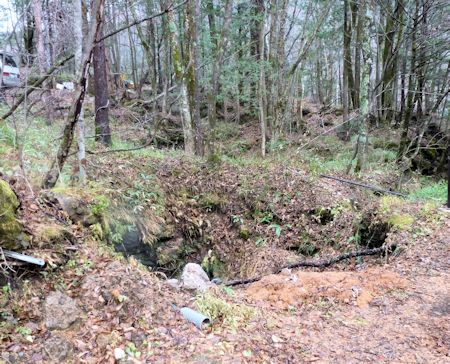 |
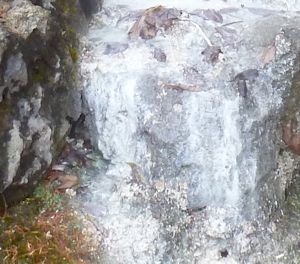 |
There are two hotels named after "Shirafune" of the past years,
not "Shirahone".
One is Shintaku Inn of Shirafune-so Hotel, in front of which drinkable
hot spring was seen. I tasted a little.
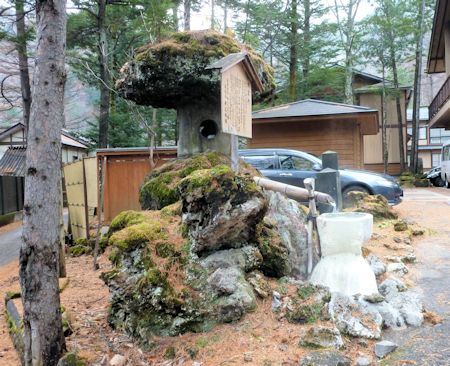
The whole village is going into hibernation until next March. So, guests
must be few now at each hotel. Only the streams around are noisy.
Just as the pictorial map shows, there were 2 monuments at the mountain
foot near Tsuruya Inn. One was the monument of the couple Bokusui and Kishiko
Wakayama.
Wakayama Bokusui, a tanka poet, deeply loved Shirahone Spa.
After his death, Kishiko, his wife, visited here, thinking of him. The
tanka poems they left here inform us of the bond between them. (the pictorial
map) |
|
|
 |
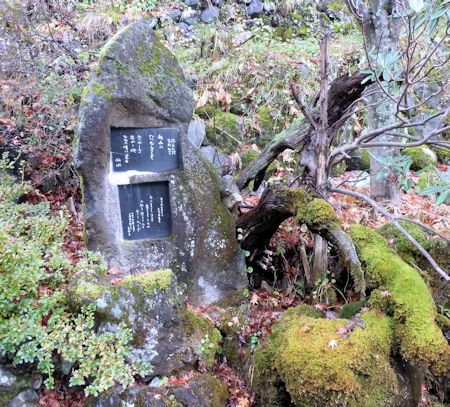 |
The following is from the official homepage of Shirahone Spa.
| The tanka poem of Bokusui
Akiyamani tatsumurasakizo Natsukashiki
Sumiyaku kemuri mukatsu mineni miyu
A passage of his travelogue
(from "The Woods and the Leaves, Hot Spas around the Volcano")
Shinshu Shirahone Spa is located on the north hillside of Mt. Norikura-dake,
at the altitude of 5,000 shaku (1,700 meters).
It is a small village in the mountains only of 4 spa inns, 2 soba-noodle
stores and 1 household goods store. Mail is delivered spending one whole
day and climbing up along the slope of 32 km from Shimashima Village at
the mountain foot. It lies really on the way of a steep mountain slope,
and surrounded by thick woods. The sound of streams can be heard, but the
streams themselves are not seen.
I have been staying here for nearly one month because its hot spring is
effective against gastroenteric disorder.
|
Yakushi-do Temple, another sight spot, was right above the monument. The
upper sign board was written as Ruri-den Hall.
Yakushi-do was built in Genroku 15, Edo Period (1702), still popular as
the name of "Oyakushi-sama".
Here it is called "Iouden" (医王殿), combining the sulfur of an
element of hot spring and a king of medical care. (the pictorial map) |
|
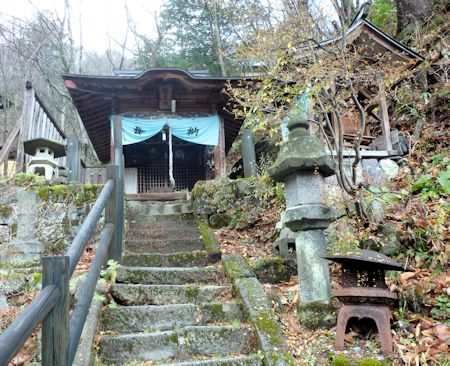 |
 |
Yakushi-do, Other Pictures
Intending to take a shortcut here, I follow a path like a maze.
But not complicated actually. Shirahone is a spa like a hiding miniature
garden. No problem even if lost.
The following is written as a "Bath for Tonosama (Lord)", not active now, but a decayed house.
Only 2 couples got on the shuttle wagon for Shiojiri Station. It started
at 9:45, earlier than usual. The driver says no guest from today for now.
It is good for Emiko to have taken a pill for carsickness. She is enjoying
the views this time along the downward winding road for 75 minutes.
We spent 1 hour resting and taking lunch of soba-noodle in the waiting
room.
The Super Azusa 16 started at 12:08 and arrived at Shinjuku Station on
time after 2.5 hours.
We got off at Maihama Station via Tokyo Station.
Finally we could return home at 6:30 p.m. That was the end of our 4-day
trip around Shirahone Spa.
|
|
|
A la Carte
Tsuruya Inn
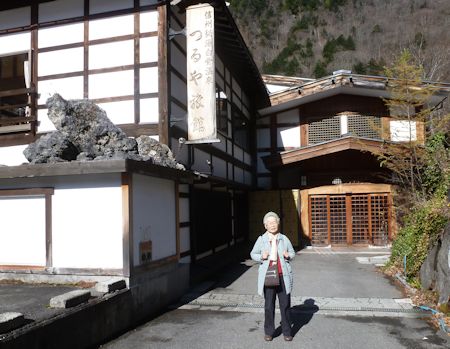 |
| Entrance |
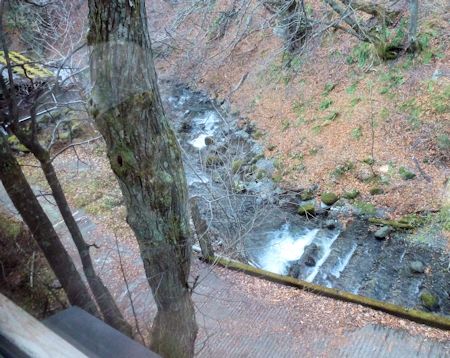 |
| The stream seen from the room |
 |
| Dinner |
There are several interesting informations in the guidebook of the inn.
First, the hot spring, smooth like silk with gentle texture. It is so-called
a bath of preventing from a cold-catch for 3 years by 3-day soaking.
A large bathroom and an open-air bath are equipped each for ladies and
gentlemen. (I missed to take a picture.)
|
This spa village is located at the foot of Mt. Norikura-dake (3,026m) along
the valley of Yukawa River, a branch stream of Azusa River. The hot spring
gushing out from the mountain at the altitude of 1,400m has a history of
several hundred years since Kamakura Period (1185-1333).
It is simple hydrogen sulfide. That is why it changes to Shirafune (a white
boat) in spite of transparent hot water when gushing out. Not known when,
but it is said to have been mispronounced and called Shirahone (a white
bone). (the guidebook of the inn)
|
The writers, like Nakazato Kaizan, Wakayama Bokusui and Saito Mokichi,
left their works when they visited here in Taisho Period (1912-26).
Tsuruya Inn, with 27 guest rooms, is situated at the upstream area of this
spa. All the rooms are said to face the stream, clear both to the eyes
and ears.
The first day afternoon, the shuttle wagon drove us from Shiojiri Station
to the hotel spending 75 minutes, jolting up and down, right and left continuously
along the steep slope in the altitude difference of more than 500 meters.
Emiko fell into heavy carsickness and I got too tired. The spa was such
a remote small village in the mountains.
We stayed here for 4 days and were able to visit Matsumoto Castle. So,
we have no particular complaint. But I stick to the idea that this spa
is really a remote village.
Since it is along the road anyway, a private car can manage to get there.
Then, what kind of charms does it have?
To get to Matsumoto Castle, a series of a bus and a train of Alpico Traffic
would take nearly 2 hours.
This traffic company has a bus service to the two famous sight spots of
Kamikochi and Norikura Heights far by 30 minutes or more. But two of them
have their own hot springs.
The bus service itself is off in the winter season.
In my present understanding of this small village, it is good for a slow
spa treatment from early summer to the season of red leaves, or for a one-day
stay on the way of a sightseeing bus tour.
Though might give offence to Tsuruya Inn and Shirahone Spa itself, the
following are what I felt during the 4-day stay.
| * |
The inn of our stay is surrounded by woods in the mountains, and it is said the steep stream sound can be seen and heard in all guest rooms.
Not only everybody may appreciate the inn here during the season of fresh
green and red leaves, but also I believe its atomsphere is not altogether
worthless out of the season. |
| * |
This inn does not have a place for spa treatment, so not suitable for the
stay only for days. Besides there are not specially good sights around. |
| * |
Every staff had warm consideration. It was a regret no staff was a local
inhabitant. I could not feel any local culture peculiar to Shirahone. |
| * |
I thought that foreigners, especially European people would appreciate
this remote village. Simple and natural beauty, narrow passes, streams,
thin and small falls and milky hot spring, in addition to the valley viewing
sheer cliffs in front. If such guideboards in English, as an international
language, are well equipped along the roads and in the inn, they may have
a good impression even if they feel some kind of inconvenience. |
| * |
How about the coordination among the 11 hotels in the village?
At Hijiori Spa in Yamagata Prefecture and Yudanaka Spa in Nagano Prefecture,
we enjoyed the hot-spring tour from hotel to hotel. |
| * |
What is a peculiarity in Shirahone? Both pride and reverse would be a supporter in some way. I hope some stimulation by the whole village. |
| * |
There are a couple of peaceful views like Thirty-Three Kannon and Ryujin
Falls here, but on the whole, this is a secluded spa village, inconvenient
and lack of charm except milky hot spring. This situation may be a strong
supporter under certain circumstances. |
Around Tsuruya Inn, Other Pictures
Meal Time in Tsuruya Inn, Other Pictures
Daibosatsu Pass and Shirahone Spa
Why is the monument of Nakazato Kaizan in Shirahone Spa? Is it because this village is his hometown or because the hero "Tsukue Ryunosuke" of his all-through-the-life novel "Daibosatsu Toge (Pass)" soaked in the hot spring here? The latter guess seems to be right.
According to a certain pamphlet, there is the following passage in the
novel.
Getting to Shirahone Spa and looking back at Konashi-daira Field, Koyuki
was fascinated by the clear view and her previous fear disappeared.
Above all, Ryunosuke was relieved feeling firstly to be able to sleep well
from now. |
There is also such information as:
This spa village used to be called Shirafune but became famous by the name
of Shirahone right after Kaizan wrote this novel.
Daibosatsu Pass and Basho's Mogami River
Thinking of "Daibosatsu Toge", I recall one passage of the travelogue
I wrote a long time ago.
It was in the summer of 2001, when I visited Mogami River and Yamadera
Temple in Yamagata Prefecture chasing after Matsuo Basho, a famous haiku
poet in Edo Period.
I would like to copy it here, maybe blowing my own horn of self-satisfaction.
|
Nakazato Kaizan wrote the first passage of the said novel like this.
Daibosatsu Toge lies 30 ri (120 km) west of Edo after a side road of Koshu
highway. It is the highest and the most steep spot along the terrifying
danger slope for 8 ri (32 km) up and down in Hagiwara Village of Kai Country.
At the altitude of 6,400 shaku (2,100 meters), once a noble saint, standing
on the top of this peak, prayed for the water falling down to the east
to be clear and for the water falling down to the west to be clear, and
buried the statue of Bodhisattva.
Since then, the water falling down to the east became Tama River and the
water falling down to the west became Fuefuki River, ..... (the end of
quote)
200 years before the above novel, Matsuo Basho wrote the following passage
of Mogami River in his travelogue "Oku-no-Hosomichi" (The Narrow
Road to Oku).
The Mogami River has its source in Michinoku, and its upper reaches are
in Yamagata. The Chessboard and Peregrine Rapids are among the terrifying
danger spots in its cource. The river flows north of Itajiki Mountain,
and finally enters the sea at Sakata. Mountains over-hang the river on
both sides, and boats are sent down-stream through the thick vegetation.
Probably what the poet called "rice boats" were boats like mine,
except loaded with rice. Through breaks in the green leaves we could see
the White Thread Falls. The Hermit's Hall stands facing the riverbank.
The river was swollen and the boat in danger.
|
|
|
|
samidare wo
atsumete hayashi
Mogamigawa |
|
Gathering seawards
The summer rains, how swifty flows
Mogami River |
Translated into English
by Mr. Donald Keene
(Kodansha Publishing)
|
Doesn't anybody think the two works have considerable similarity?
I imagined Kaizan might have referred to "The Narrow Road to Oku".
|
|
|
|
|
| Part 3 |
4 Days around Shirahone Spa
End |
|
|
|
|
|
|
|
|
|
|
|